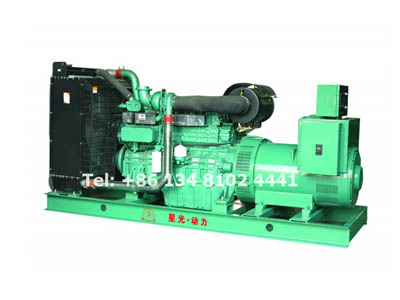Correctly sizing a generator is a key factor in avoiding the loss of efficiency and durability.
Finding just the right measurement
The initial and most basic step is to define which devices will be connected to the power generator and to know the necessary power rating for the project. In other words, to know the total power of all the electrical devices which will need to be powered by the genset, applying simultaneity rates wherever possible and always responding to the client’s requirements and needs.
However, a simple mathematical operation will not give us enough information. There are other factors which much be taken into account, for they affect the result of this calculation. They have to do with technical aspects, as well as with usage and environmental ones.
It is necessary to have a more thorough control over the greater loads in the installation; electric motors, illumination for discharge lamps or LEDs, are all electrical loads which are difficult to power because they involve transitional processes which can cause peak consumptions lasting for split-seconds, which badly designed devices will not be able to sustain.
Diesel Generator
Sizing the generator set
In order to size the genset and decide on its configuration, the team of engineers will take as a basis the electrical, mechanical or civil engineering project. This will define:
The necessary power rating and load types required in order to cover present and future needs.
The elements which the device needs to have (manual or automatic start, operating in parallel with other devices or with the public mains, sound insulation, auxiliary fuel storage, heaters, etc.)
The legal standards one has to comply with (electricity, noise, gas and particle emissions, transportation norms in the case of mobile generators).
The location where the device(s) will be installed (under a roof, outdoors, elevation above sea level, dusty environment, etc.)
Application and frequency of use
Some uses may require safety margins with regard to power rating, it is not the same thing to supply continuous power in order to sustain a constant electrical load without interruption (COP generators) or to do the same but with variable power (PRP-STP generators) or to respond to emergency or standby cases (ESP generators). For this reason, it is necessary to correctly define the energy needs which will be demanded from the generator, in order to provide a solution tailored to your needs.
Environmental conditions
The location where the genset is installed is a decisive factor. The generator set supplier can provide solutions for:
Saline environments.
Marine generators.
Mines and dusty environments (IP 45).
Nuclear zones.
Earthquake-proof electrical panel.
Extreme temperatures (-32°c to +50°c).
Mobile generators reinforced for military use.
Elevation of the installation
This factor may come as a surprise, but if it is not taken into account, it may destroy the engineering work entirely. The engines need oxygen in order to function and the oxygen concentration decreases as the genset’s location’s altitude increases. This leads to the mixes inside the combustion chamber being poorer in oxygen, thereby decreasing the engine’s power output by up to 10% in the first 1000 metres of altitude if the engines have atmospheric aspiration. However, in the case of turbo engines, there will be no loss of energy output at this level.
For more information about generator set, welcome to contact us today or request a quote.

Comments
Post a Comment